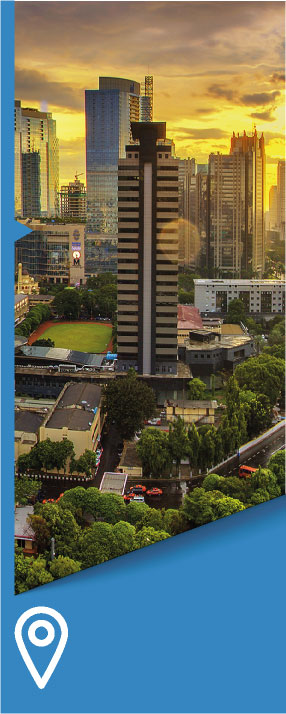Hotel Meeting Room
Hotel Meeting Room

Health, Safety, Security , Environment Training Courses


Health, Safety, Security , Environment Training Courses
Hotel Meeting Room
Hotel Meeting Room Beirut
Beirut
Classroom
Overview ?
Air quality is a major area of importance in environmental engineering. Contaminants emitted along an air pathway from industry have been shown to have a major adverse public health effect worldwide. As a result, many government agencies are promulgating and enforcing strict air quality rules, and industrial facilities are employing environmental engineers to minimize emissions, impacts, and exposure to the public. Growing research and case studies have demonstrated a greater understanding of air quality engineering. Strategies and technologies exist to accomplish these goals. There are few “black and white” solutions, however. Engineering decisions to reduce air emissions and impacts draw upon a strong understanding of the technologies available, their effectiveness, cost, and capability of causing auxiliary production and environmental problems.
This course begins with a thorough explanation of the background and history of air quality engineering, followed by discussions of what we know about air emissions, different ways they are calculated, air pollution control (APC) technologies and strategies, factors involved in their ground-level concentrations, and potential health impacts and ways to regulate air emissions. The course is designed to help you understand the basics of air quality engineering and understand its particular language, terms, and approaches. Orem ipsum dolor sits elit.
The training methodology is interactive with group exercises and is suitable for all employees involved in functions management. The pace and level of the training workshop is customized to the understanding of the delegates. Ongoing back-up and support is available after the training on request to the supplier, and the training course is also available for in-house presentation as well as for “Competency Transfer”.
Certificate will be issued to all attendees completing minimum of 75% of the total tuition hours of the course.
This course will be useful for environmental engineers, design professionals, APC equipment manufacturers, machinists, inspectors, and construction workers who are interested in gaining a better understanding in air quality.
This course is intended to provide you with the following specific knowledge and skills
Day 1
Asset Cost Management Introduction
Definitions of reliability, maintenance & asset management
The total cost of maintenance
Best practice reliability and maintenance processes
Elements of asset management best practice
Auditing performance
Overview of TPM, RCM, BCM, QCM, and other asset management buzzword
Open discussion sessions
Day 2
Laying the Groundwork
Definitions of reliability, maintenance & asset management
The total cost of maintenance
Best practice reliability and maintenance processes
Elements of asset management best practice
Auditing performance
Overview of TPM, RCM, BCM, QCM, and other asset management buzzword
Open discussion sessions
Day 3
Applying the Value based Process
Definitions of reliability, maintenance & asset management
The total cost of maintenance
Best practice reliability and maintenance processes
Elements of asset management best practice
Auditing performance
Overview of TPM, RCM, BCM, QCM, and other asset management buzzword
Open discussion sessions
Day 4
Ensuring the Continuity of the Value-based Process
Definitions of reliability, maintenance & asset management
The total cost of maintenance
Best practice reliability and maintenance processes
Elements of asset management best practice
Auditing performance
Overview of TPM, RCM, BCM, QCM, and other asset management buzzword
Open discussion sessions
Day 5
Supporting Process that Lower Life-cycle costs
Definitions of reliability, maintenance & asset management
The total cost of maintenance
Best practice reliability and maintenance processes
Elements of asset management best practice
Auditing performance
Overview of TPM, RCM, BCM, QCM, and other asset management buzzword
Open discussion sessions
Training Methodology
Pathways Training and consulting adopts the newest techniques of human resources Training and consulting and, with the following:
Course name
Duration
City
Price
Air Emission and Greenhouse Gases
07, Jul 2025 11, Jul 2025
Rome
5250$
Air Emission and Greenhouse Gases
13, Jul 2025 17, Jul 2025
Kuwait
3250$
Air Emission and Greenhouse Gases
14, Jul 2025 18, Jul 2025
Geneva
5250$
Air Emission and Greenhouse Gases
04, Aug 2025 08, Aug 2025
Berlin
5250$
Air Emission and Greenhouse Gases
04, Aug 2025 08, Aug 2025
Kuala Lumpur
3750$
Air Emission and Greenhouse Gases
10, Aug 2025 14, Aug 2025
Casablanca
3450$
Air Emission and Greenhouse Gases
11, Aug 2025 15, Aug 2025
Beijing
5450$
Air Emission and Greenhouse Gases
17, Aug 2025 21, Aug 2025
Beirut
3250$
Air Emission and Greenhouse Gases
24, Aug 2025 28, Aug 2025
Sharm ElShaikh
3250$
Air Emission and Greenhouse Gases
25, Aug 2025 29, Aug 2025
Marbella
5250$
Air Emission and Greenhouse Gases
25, Aug 2025 29, Aug 2025
Milan
5250$
Air Emission and Greenhouse Gases
27, Oct 2025 31, Oct 2025
Istanbul
3450$
Air Emission and Greenhouse Gases
02, Nov 2025 06, Nov 2025
Cairo
2950$
Air Emission and Greenhouse Gases
24, Nov 2025 28, Nov 2025
Trabzon
4000$
Air Emission and Greenhouse Gases
01, Dec 2025 05, Dec 2025
Brussels
5250$
Air Emission and Greenhouse Gases
22, Dec 2025 26, Dec 2025
Amsterdam
5250$
Air Emission and Greenhouse Gases
28, Dec 2025 01, Jan 2026
Jeddah
3250$
Air Emission and Greenhouse Gases
29, Dec 2025 02, Jan 2026
Vienna
5250$

View course

View course

View course

View course

View course

View course